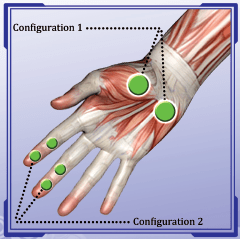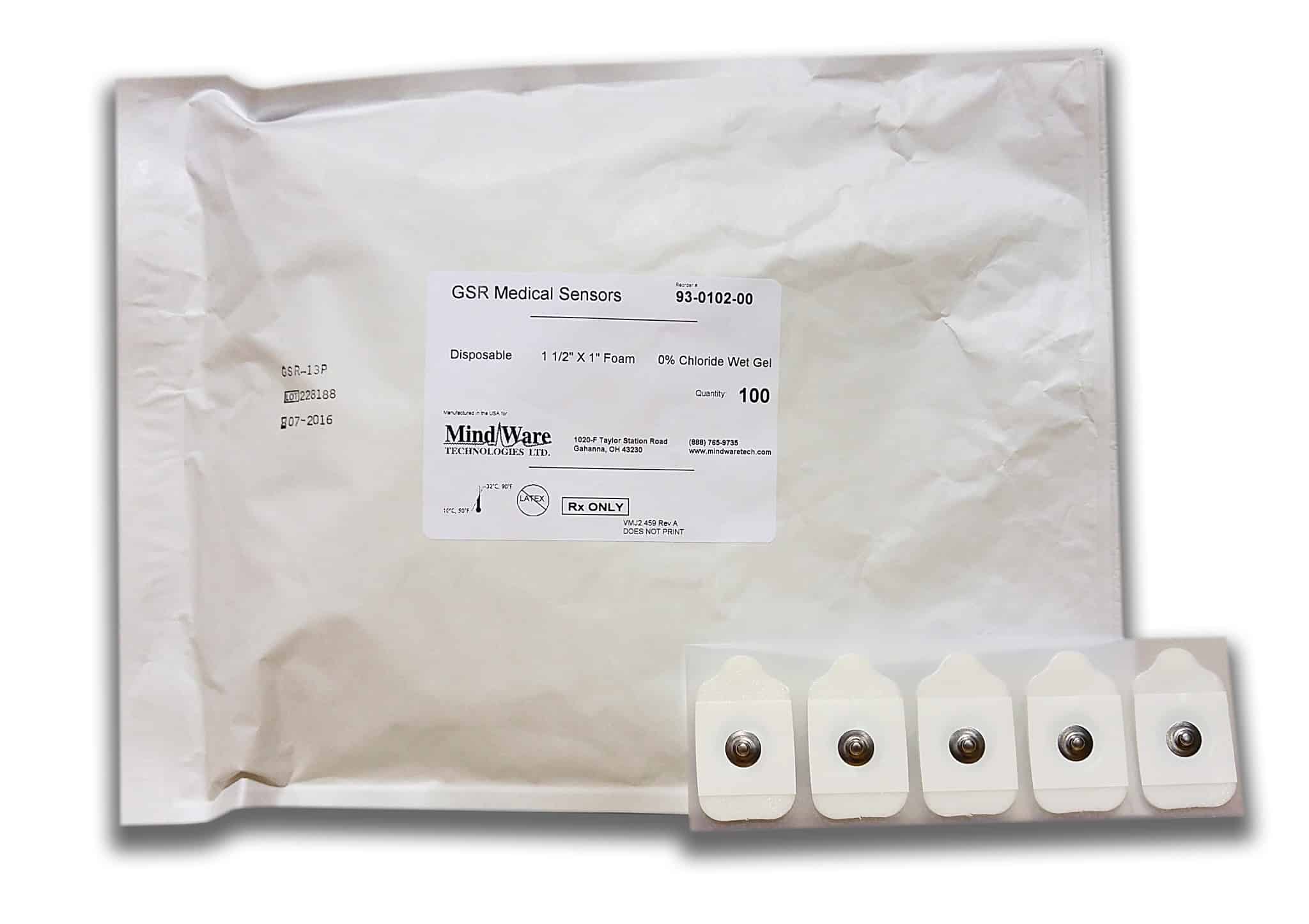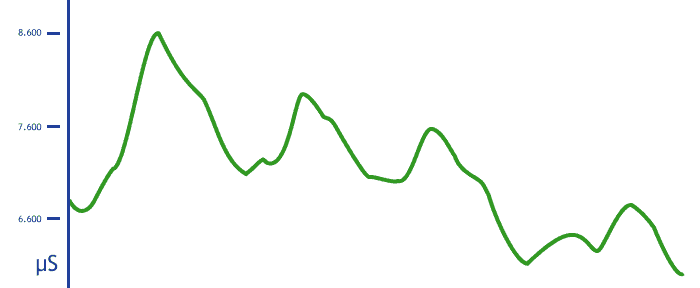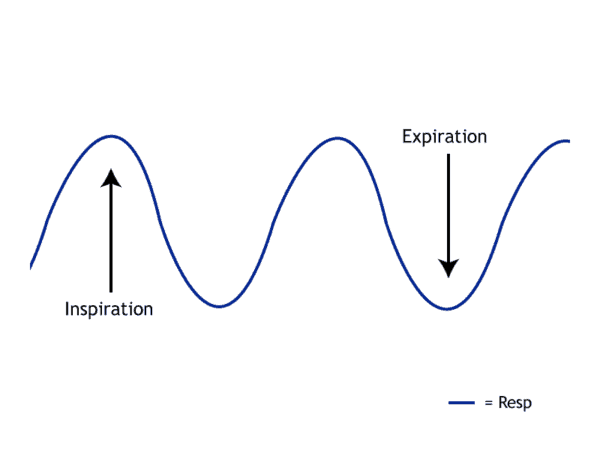All About Electrodermal Activity
EDA stands for Electrodermal Activity, and is the measurement of changes in the electrical properties of the skin. When a person sweats, the conductivity of their skin changes, and activation of eccrine sweat glands is an established indicator of sympathetic nervous system arousal. Therefore, by measuring the changes in skin conductance, one can gain insight into psychological state of the subject.
Note: When we refer to sweat, we are referring to subtle changes in perspiration that are only detectable by precise instrumentation. Although it uses similar mechanisms, this is quite different than the amount of sweat produced by physical activity.
One Concept – Many Names
As with many concepts in the field of psychophysiology, there are many names and acronyms used to describe electrodermal activity. It may be referred to as Galvanic Skin Conductance (GSC), Skin Conductance (SC), or Galvanic Skin Resistance (GSR), as conductance is simply the inverse of resistance. If you are acquiring data with MindWare hardware you will notice that the channel used for collecting skin conductance is labelled “GSC”.
Others have referred to it in publication as Electrodermal Response (EDR), or Skin Conductance Response (SCR), which is actually an identifiable change on the EDA waveform (a topic we will discuss further later).
EDA has become the standard way of referring to this concept and will be primarily the way we refer to it moving forward, but it is important to recognize the different terms used to describe it.
How is it measured
EDA is typically measured on the palms of the hands, specifically on the thenar and hypothenar eminence. It is also commonly measured on the finger tips.
These sites are chosen because of the high density of eccrine sweat glands, meaning an increased ability to detect changes in skin conductance. That being said, there are eccrine sweat glands all over the human body, so it is possible to measure skin conductance at many other sites. One example would be the soles of the feet, which are commonly used when dealing with babies.
With MindWare equipment, conductance is measured by applying a low DC voltage across the skin and measuring how the current changes.
It is also critical to recognize the difference between electrodes used to measure electrodermal activity and those used to measure other common physiological signals such as ECG. MindWare Electrodes used for EDA are rectangular in shape, and have a different electrode gel concentration (0.5% chloride wet gel). The ion concentration in the gel is designed to be similar to the ion concentration in sweat. Higher ion concentrations found in ECG electrodes will saturate the eccrine glands and inhibit the bodies ability to produce a sweat response.
For more instruction on collecting EDA, check out this video.
Useful Signals
EDA/GSC
The skin conductance signal is required to assess electrodermal activity. It is measured in microsiemens (uS) which is a unit of conductance. A typical skin conductance signal has an amplitude between 0.5-45 uS.
EDA signals are characterized by slow rolling changes in amplitude, with sharper changes associated with specific responses.
Respiration
Respiration is also a useful signal to reference when analyzing skin conductance, particularly for signal editing purposes and understanding the origins of a skin conductance response. Respiration can either come from a source recording respiration directly, such as a respiration belt, or derived from the cardiac impedance signals.
Helpful Hints
- Electrodes are specifically designed to measure EDA, and differ from electrodes used to measure other physiology
- Make sure the subject is well hydrated and has not used any soap with fragrance or alcohol content, which is capable of drying out their hands prior to data collection
- Respiration is not required to analyze EDA, but can be helpful to reference for editing purposes/artifact detection
Next time we will discuss typical morphology of the EDA waveform, and it’s identifiable components.
Want to get some hands on experience? Download the EDA Analysis 3.2 software for a fully functioning demo!




